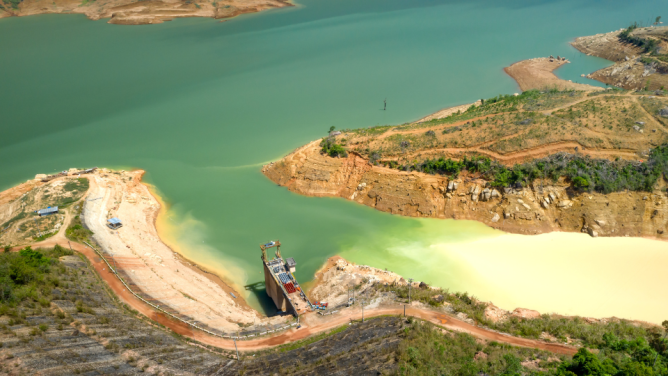
Rewilding is the latest trend. Recently, the NGO Wildcard put pressure on the British Royal family to rewild and restore nature to the large swathes of land that they own. The non-profit Rewilding Europe has received nearly €5 million in funding to carry out the same type of action. Others – such as Guillaume Porcheron, author of Réensauvager les Territoires – call for wilderness areas to be included in the French Code de l’urbanisme (town planning code), to make it easier to take natural areas into consideration in urban planning policies. We interviewed Gilbert Cochet and Béatrice Kremer-Cochet to get a better understanding of this term that is often misused. As naturalists, associate professors of Earth and Life Science, and experts at the Conseil scientifique du patrimoine naturel régional (CSPNR – the Scientific Council for Regional and Natural Heritage Affairs), they are among the most reputed experts on the subject. They are also the authors of Ré-ensauvageons la France (Actes Sud, 2018) and L’Europe réensauvagée (Actes Sud, 2020). Exclusively for Leonard, they go over the major issues related to rewilding spaces and policies.
What is the definition of rewilding?
BKC: There seems to be a habit of throwing everything and anything behind the term. But the broadest definition is that rewilding consists of protecting a place to restore all of its components and functions. For example, this involves reintroducing native animal species and reconstructing food chains – from herbivores to large predators, including necrophages (Editor’s note, organisms that eat decomposing dead animals, an essential ecosystem service). The aim isn’t to rewild the entire surface of a country, but to think about the balance between our real needs and what we can leave to nature, knowing that this wildlife provides us with ecosystem services for free. By adapting urban planning and occasionally leaving space for nature, we create corridors between the large spaces of sanctuary that I mentioned above. This is essential because if species can’t circulate from one sanctuary to another, ecosystems cannot rebuild themselves, and there’s a risk of inbreeding establishing. This is what happened with the lynx when it was reintroduced in Italy.
How are we taking care of our natural habitats today?
GC: It all depends on the habitat. As far as waterways or forests are concerned, we’ve seen restorations that were unimaginable a few decades ago. This is the case with the removal of major dams, such as the Maisons-Rouges dam or the one on the Allier river, which has enabled sediments and migratory animals to flow freely. As for the forests themselves, réserves biologiques intégrales – or non-intervention wilderness areas – have been created, which has demonstrated that forests are very capable of looking after themselves. Since the introduction of the 1976 French law on nature conservation, species protection has also made progress. Protected species have grown throughout Europe, and some such as the sea eagle, the great egret and the vulture have returned to France after having been protected in other countries.
BKC: On a more negative aspect, the agricultural and sea fishing sectors are two areas which are displaying catastrophic results. For example, recent reports published concerning the decline in insect populations show that problems related to pesticide can extend beyond the farming area.
Have we passed a point of no return in these sectors?
GC: In Europe, less than 1% of all fish species remain. What is serious is that we’ve forgotten just how rich and diverse natural habitats should be. For example, when you go diving in the Port-Cros nature reserve, you have the feeling of extraordinary abundance and diversity – when in reality this is the norm. What is extraordinary is that there’s nothing left next to the protected areas.
BKC: We’re suffering from environmental amnesia. We perceive the environment into which we are born and have known all our lifetime as the norm. Today, water is considered safe to drink when the nitrate level is less than 50mg per litre. A few decades ago, the threshold was 5mg. If you talk to young professionals, they’ll you that it’s impossible to achieve this rate. The example of sturgeon is pretty representative of this. Nobody knows that French rivers were full of sturgeon less than a century ago. Everyone has forgotten about French-made caviar. We’ve forgotten about abundance and we manage to be satisfied with very poor habitats.
What are the different approaches for habitat restoration? Why is “sanctuarisation” a solution?
BKC: Conservation and creating sanctuaries work. Two ideas must be challenged. First, we need to explain that habitats left to evolve freely don’t close off. Habitats left to evolve freely don’t necessarily become dense and impenetrable forests, as we may sometimes hear talked about. Second, “sanctuarisation” does not destroy the economy. The director of the Swiss National Park recently told to us that the park brings in €20 million each year for the four municipalities that own the land thanks to well-managed ecotourism.
Can we rewild cities?
BKC: Rewilding is a fashionable term and is mentioned a lot in urban contexts. I wouldn’t go that far. Rebuilding an entire wild ecosystem in an anthropised area is not always possible, be it for cohabitation or even safety reasons. On the other hand, renaturation is possible, we can de-artificialise areas that have been completely covered in concrete and tarmac or sterilised by monoculture. Renaturing cities is extremely beneficial. For example, forests impose their climate. Trees draw water through their roots, with evapotranspiration happening in their leaves. Their foliage provides permanent protection, preventing the sun’s rays from reaching parts of the ground and maintaining humidity. This ability to maintain humidity is reinforced by the presence of humus, which is formed when plant matter decomposes, as it has a strong water retention capacity. Humidity and temperature are constantly maintained. Putting woodland back in cities is a way of moderating humidity and temperature.
Do you have prime examples of this?
BKC: One example in an anthropised environment is the work we’ve done with a company called Pocheco. After a fire broke out in their factory, they decided to rebuild it on a smaller floor area, while renaturing the surrounding spaces. They used agromining techniques to depollute the soil, by planting plants that naturally recover heavy metals from the soil. They then redeveloped certain land, installing organic permaculture and reintroducing a wetland on a small section. Green walls and roofs have improved the insulation. Rainwater is collected for non-potable uses.
GC: The aforementioned Maisons-Rouges dam also springs to mind. Located at the confluence of the Creuse and the Vienne in France, it was removed in 1998. We have seen sea lampreys, salmon and otters returning in high numbers. What’s more, this has enabled a sand spit to form, which is growing at a rate of 3km per year and will eventually nourish beaches on the Atlantic coast.


